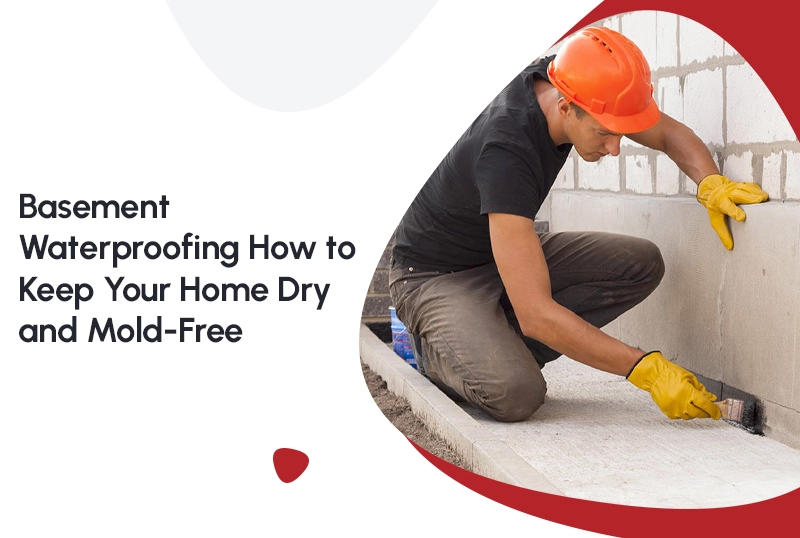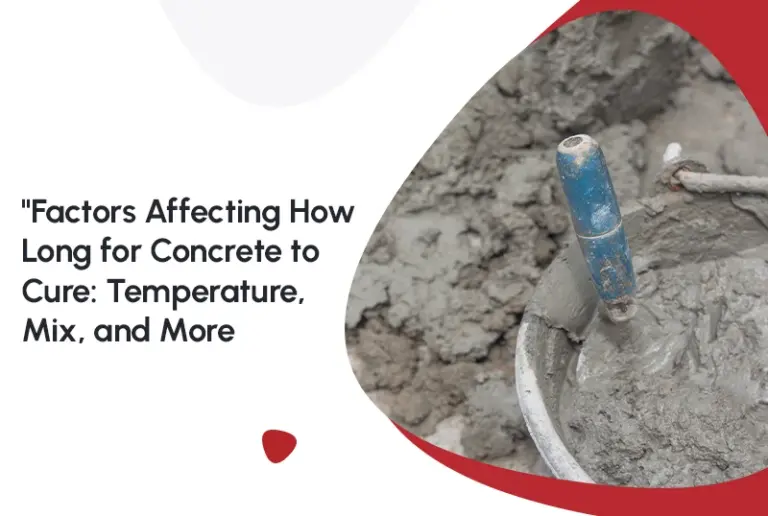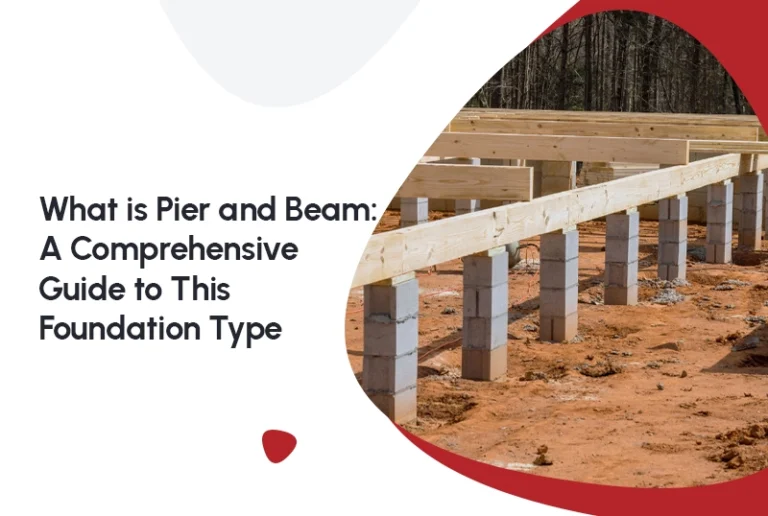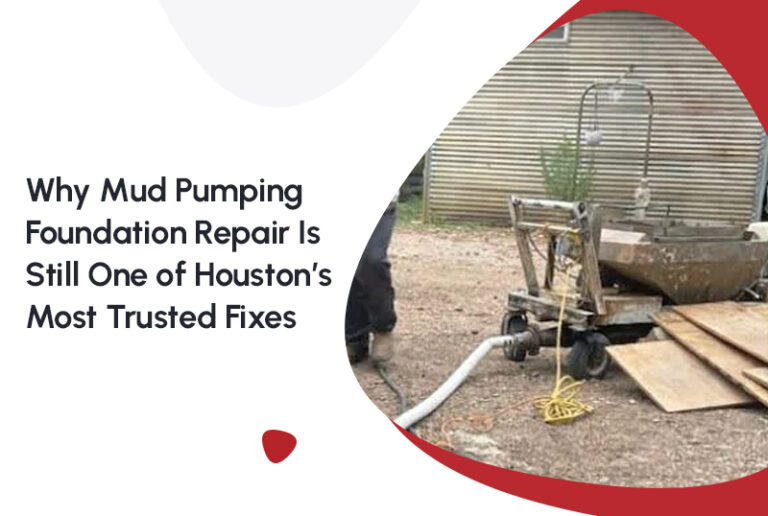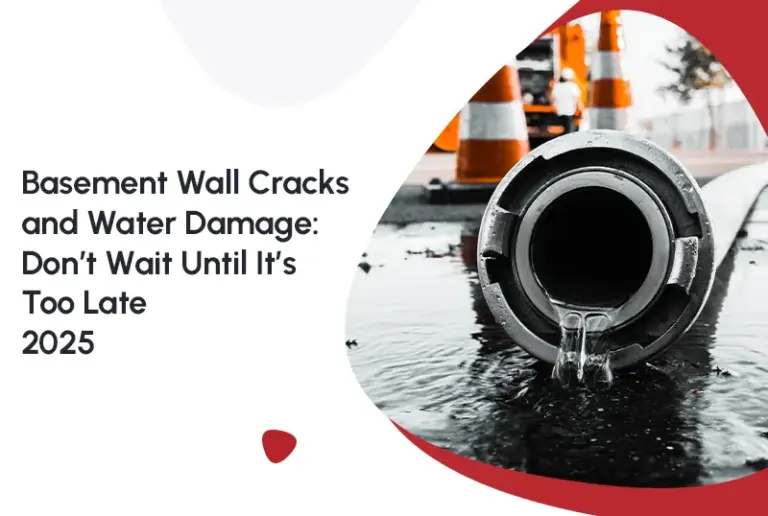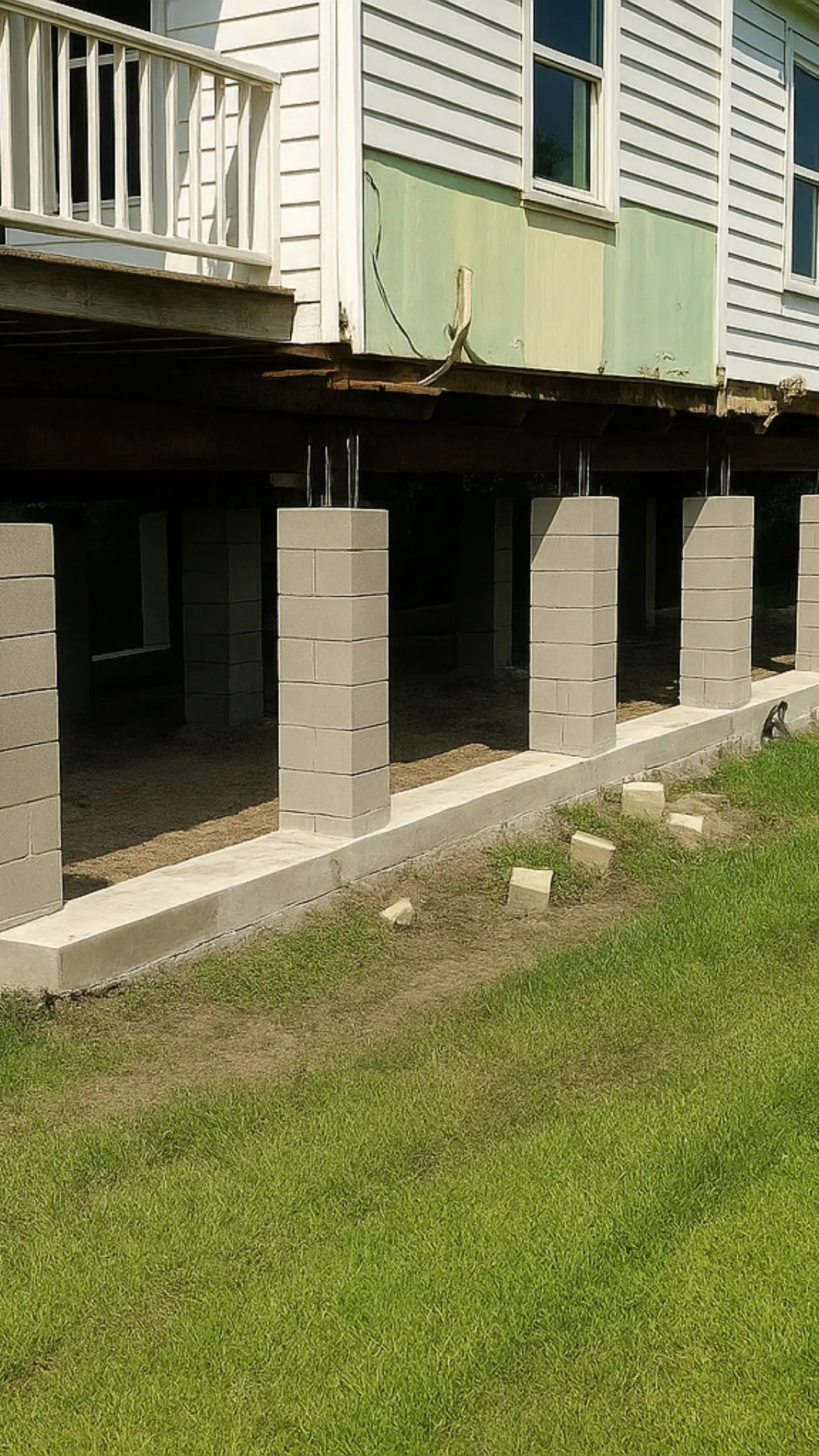Basements are often prone to moisture problems, which can lead to mold growth, unpleasant odors, and damage to your home’s structure. Basement waterproofing is the key to keeping your basement dry and protecting your home’s foundation. If left unchecked, water intrusion can weaken your home’s structural integrity and even cause major issues that require professional foundation repair. Early waterproofing helps you avoid costly repairs and maintain a healthy living space.
Common Causes of Basement Moisture and Mold
Water Intrusion from Outside
Rainwater, groundwater, and poor drainage around your home can cause water to seep into your basement walls or floors. This moisture creates the perfect environment for mold.
Cracks in Basement Walls or Floors
Even small cracks can allow water to enter your basement. These cracks, if ignored, can worsen over time and lead to foundation problems.
High Humidity and Poor Air Circulation
Basements often have higher humidity than the rest of the home. Without good ventilation, moisture lingers and encourages mold growth.
Plumbing Leaks and Condensation
Leaky pipes or condensation on cold surfaces add to the basement’s moisture level, further increasing mold risk.
How Basement Waterproofing Prevents Mold Growth and Damage
Seals Out Water with Waterproof Barriers
Applying waterproof coatings or membranes on walls and floors prevents water from penetrating your basement. Sealing cracks professionally is essential to stop leaks.
Installs Drainage Systems to Divert Water
Interior drainage channels, sump pumps, or exterior French drains help move water away from your basement, keeping it dry.
Controls Humidity Levels
Basement waterproofing often involves installing dehumidifiers and improving ventilation to keep relative humidity below 50%, making it harder for mold to thrive.
Improves Indoor Air Quality
A dry basement reduces mold spores in the air, protecting your family’s health and preventing allergy or respiratory issues.
Essential Basement Waterproofing Steps
Inspect and Repair Foundation Cracks
Regularly check your basement for cracks. Small cracks can be sealed with waterproof sealants, while larger ones may need professional repair.
Maintain Gutters, Downspouts, and Exterior Grading
Ensure gutters direct water far from your home and that the landscaping slopes away from the foundation to avoid water pooling.
Use Sump Pumps and Drainage Solutions
Installing a sump pump with battery backup ensures that groundwater is pumped out efficiently, even during storms or power outages.
Keep Your Basement Well-Ventilated
Improve airflow by using exhaust fans, opening windows, or installing ventilation systems to reduce moisture build-up.
Addressing Basement Flooring Issues with Concrete Leveling
Water damage often leads to uneven or cracked basement floors, which can be both unsafe and unattractive. Professional concrete leveling can lift and stabilize sunken sections of your basement floor, preventing further damage and improving safety.
Special Considerations for Pier & Beam Foundations
Homes with crawl spaces or basements supported by piers and beams require specific care. Water and moisture can damage wooden beams and supports, causing structural issues. Expert pier & beam foundation repair includes moisture barriers and repair of damaged components to keep your home stable and dry.
Conclusion
Basement waterproofing is crucial to protect your home from water damage and mold growth. By sealing out water, improving drainage, controlling humidity, and maintaining airflow, you create a safe, dry environment that protects your family’s health and your home’s foundation. Don’t wait for problems to grow early waterproofing can save you money and headaches down the road. For expert advice and reliable waterproofing solutions, trust professionals who specialize in foundation repair, concrete leveling, and pier & beam foundation repair.
Frequently Asked Questions (FAQs)
Q: Why is my basement always damp and musty? A: Basements can retain moisture due to poor drainage, cracks, high humidity, or plumbing leaks. Waterproofing and proper ventilation are key to solving this.
Q: How does basement waterproofing prevent mold? A: Waterproofing keeps water out and controls humidity, making the environment unsuitable for mold growth.
Q: What are common basement waterproofing methods? A: Methods include sealing cracks, installing sump pumps, drainage systems like French drains, applying waterproof coatings, and improving ventilation.
Q: Can basement waterproofing fix foundation problems? A: Waterproofing helps prevent many issues, but cracks or settling foundation parts may require professional foundation repair.
Q: How often should I inspect my basement for waterproofing issues? A: Check your basement seasonally, especially after heavy rains, for cracks, leaks, or damp spots.
